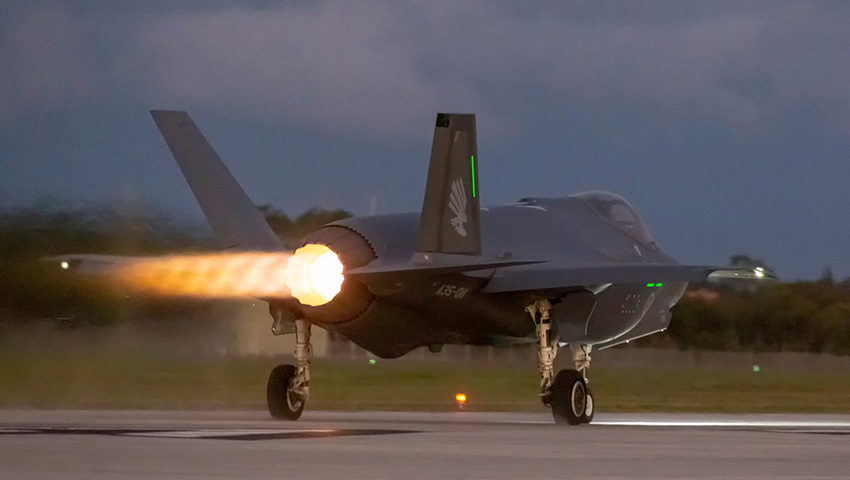No. 3 Squadron F-35 Joint Strike Fighters based at RAAF Base Williamtown will conduct the first round of training for the fifth-generation aircraft over the Salt Ash Air Weapons Range (SAAWR).
To continue reading the rest of this article, please log in.
Create free account to get unlimited news articles and more!
Up to four jets will conduct a number of passes over the range for up to two weeks during weekdays only. Acting Commander Air Combat Group, Group Captain (GPCAPT) Harvey Reynolds said the initial training runs would involve a series of dry passes over the range, and be followed by gunnery activities.
GPCAPT Reynolds said residents living in East Medowie, Salt Ash and Lemon Tree Passage can expect the range to be used intermittently throughout this period.
"The program will include practising F-35A weapons loading and unloading procedures, and provide gunnery practice which remains an essential skill for fighter aircrew," GPCAPT Reynolds said.
The F-35A aircraft will operate over the range in a similar manner to the F/A-18 A/B Hornet aircraft. F-35A operations over the SAAWR were assessed and approved as part of the F-35A Environment Impact Statement.
"Annual use of SAAWR will remain well under the usage allowed under the operational conditions for the range which is a maximum of 115 days each year over a 10-year rolling average," GPCAPT Reynolds added.
The Lockheed Martin F-35 Joint Strike Fighter is billed as a catalyst for the fifth-generation revolution, changing the face and capability of the Royal Australian Air Force (RAAF) and the wider Australian Defence Force.
For the RAAF, the F-35A's combination of full-spectrum low-observable stealth coatings and materials, advanced radar-dispersing shaping, network-centric sensor and communications suites – combined with a lethal strike capability – means the aircraft will be the ultimate force multiplying, air-combat platform.
GPCAPT Reynolds reinforced the importance of the training programs, saying, "Air Force has a responsibility to ensure personnel are ready and able to deploy at short notice and this involves necessary air-to-ground training that is employed at SAAWR."
The F-35A – the variant chosen by the RAAF – will have with a projected life of 30 years in service. Ten nations are currently flying F-35s, including the US, UK, Italy, Norway, Israel and Japan. The first of Australia’s F-35A aircraft are now based on home soil after a period of training and development at Luke Air Force Base in Arizona USA, plus an epic Pacific Ocean crossing in December 2018.
More than 340 F-35s are operating today with partner nations, more than 700 pilots and 6,500 maintainers have been trained, and the F-35 fleet has surpassed more than 170,000 cumulative flight hours.
Over the coming years, Australia will purchase 72 of the advanced fifth-generation fighter aircraft as part of the $17 billion AIR 6000 Phase 2A/B program – which is aimed at replacing the ageing F/A-18A/B Classic Hornets that have been in service with the RAAF since 1985.
Stephen Kuper
Steve has an extensive career across government, defence industry and advocacy, having previously worked for cabinet ministers at both Federal and State levels.

 Login
Login








